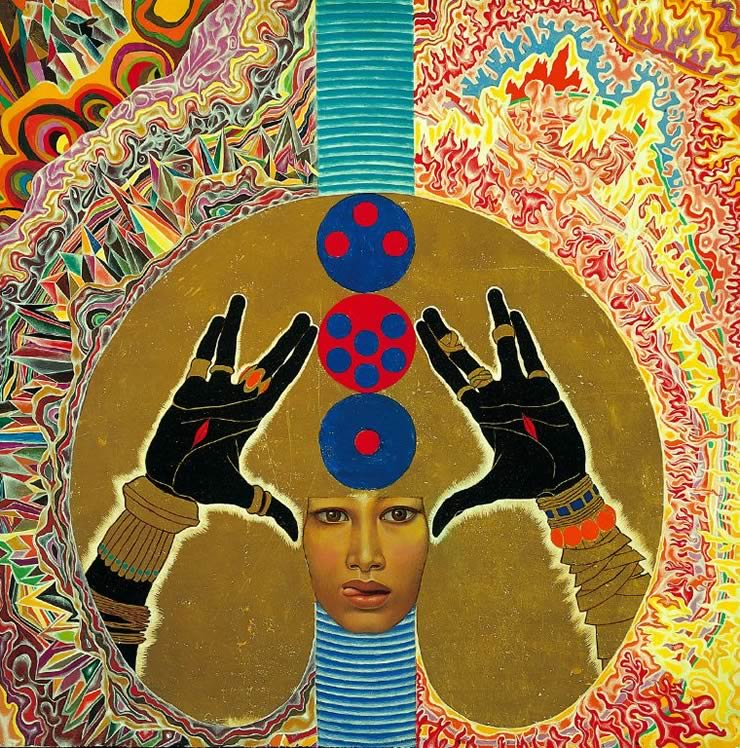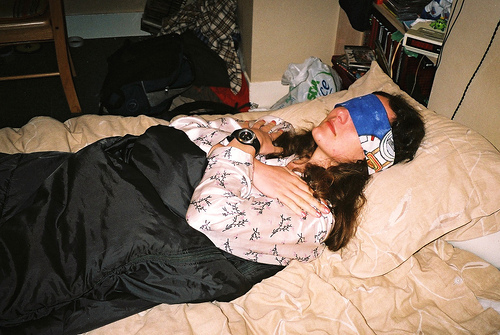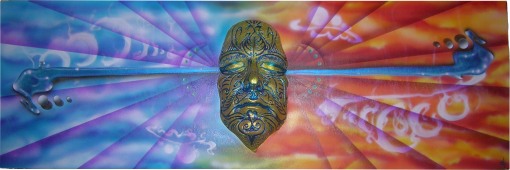Insight
During and after a psychedelic experience, trippers often say that they’ve learned or discovered something through the experience — for many, that’s why they took it in the first place. When I talk about this to non-users, however, there’s often a reluctance to accept that this is possible. How could a drug teach you something? Weren’t they just hallucinations? If you did learn something, couldn’t you have learned it at least as easily sober?
![]()
Often, the things people learn are features of their surroundings which, some might argue, could have been observed without having taken drugs. For example, negative perceptions of the places where the trip took place. One respondent said that Wasaga Beach “…felt like an episode of the Jersey Shore… it was douche-con. … every time I think about it, it makes me laugh, it just seems like a hilarious place.” Another (a white, male, 17 year old) talked about tripping at Canada’s Wonderland and said how the greed and gluttony of the place really bothered him. “It made me more aware of how everyone was trying to sell me something, literally everywhere I looked. … gluttonous entitlement… morbidly obese children stuffing their face with doughnuts. It led to a bad experience, and, in all honesty, I do not want to go back to Wonderland.” It’s not like the things my respondents were noticing about Wasaga and Wonderland were produced by the drugs they’d taken, and some people might develop similar impressions of those places without psychedelics. In fact, another of my respondents told me about a great trip had at Wonderland, so taking mushrooms there is neither necessary nor sufficient for developing those negative impressions. However, for my respondent who did that feel that way, the mushrooms seem to have played some sort of role.
In cases like these, that role is in blowing up what’s already happening to larger than life proportions. By exaggeration, truth becomes more obvious: motives and relationship dynamics we usually just ignore come to the surface, and the superficial pleasures of places like Wonderland and Wasaga may no longer be sufficient to blind us to their faults, which are now experienced on a much larger scale. Similarly, I’ve had several respondents talk about romantic relationships that they realized were doomed because of a trip: they were together for the wrong reasons to begin with, but until they took psychedelics, they lacked the insight to realise that they don’t actually like each other all that much. First they sobered up, then they broke up.
There are some common insights which often occur to people during psychedelic trips. Things like… we are all connected; trees contain recursive geometry; nature is awesome; love, empathy and compassion are very important. When described in writing like this, these things seem obvious, but sometimes experience is necessary to catalyse our understanding. The classic psychedelics simultaneously increase our perception of significance while improving our ability to think both clearly and abstractly, helping us to see what we should have seen all along.

Not all insights gained are experienced as good things. Sometimes, self-critical observations become dominant. For instance, you might realize that you’re lazy, filthy, selfish, effluent, unprepared or disrespectful. Some people realise they have a poor diet, get insufficient exercise, have a bad living situation or a weak social support network, etc. These sorts of insights are often on the margins of our consciousness and can be accessed by act of will; the psychedelic seems to cut out the middleman, so to speak, confronting us with our lives and surroundings whether we want to confront them or not. While this may be unpleasant, sometimes it provides just the slap in the face we needed in order to start fixing things. One respondent told me how, during a solo acid trip, it occurred to her that she really knew very little about her friends, having mostly gotten by on superficial details and never having cared to ask many personal questions. Rather than simply sulking or feeling ashamed, she spent the next while making lists of everything she did know about her friends, committing herself to learning more about them in the future.
To many people, especially non-users, this probably doesn’t sound like what you’d expect from an acid trip — it sounds more like just a day spent at home thinking about things. But for a lot of people, that’s exactly what an acid trip is. “Tripping” really just means thinking intensely about something, often to the point of absorption. If you follow the standard recommendation for a trip (preparing by eating well, thinking through your current mental state with an eye to anything that may be wrong, ensuring that you have a comfortable place where you can be alone if you choose, but also good, loving friends to communicate with if you want company, and taking time afterward to reflect upon and integrate anything you may have learned), chances are good that you’ll gain valuable insights even if you don’t take a drug: intentionality and contemplation are enough. However, some substances seem to synergize fantastically with this sort of process, and are therefore useful to occasion insights.
When an insight comes to us in a visual form, it seems easier to make the leap to saying that it was “because” of the drug, since we associate seeing things with being on drugs. It’s often said, for instance, that Dr Francis Crick discovered the molecular structure of DNA because, after many nights of trying unsuccessfully to work it out, he took LSD and saw a vision of a double helix.* For Crick, attempting to translate an extremely complex mess of numbers into an also complicated shape was clearly made a lot easier by the introduction of a visually stimulating substance.
Here’s one example of an insight with a visual dimension, from Lyrebird (an experimentalist):
“I had this one thought about the way that our society funnels people… I had this image of discrete columns of light, and I had a lot of thoughts related to vertical and horizontal assemblages of societal energy. … It seems like everybody is being… fractured… and there’s this fractured intent that permeates, where it feels like everyone’s going in a million different directions at once, versus the idea of there being some sort of continuum of willpower, and everyone working together towards some kind of mutual benefit. … It becomes very visual. All these concepts are given an imagined body, and that really helps me assemble information.”
The capacity of psychedelics to play with sensations and perceptions is not limited to the visual field, of course. Darqchild, Dave, Firefly and Four all told me that tripping taught them new ways of understanding the body, providing insight into angles of motion, joints and fluidity, making them better at such things as dancing (Dave), anatomical drawing (Firefly) and martial arts (Four). Darqchild also explained that abstract ideas may be felt physically, making them far more concrete and therefore easier to evaluate and understand. This, I think, is the crux of the matter: that normally we will try to understand things using only our heads, which, singular and rigid, can’t quite wrap around them. On psychedelics, however, our cognition becomes fluid, and we flow over them, experiencing with our totality. Music, emotions and concepts all engage us through many senses at once, and the visual or tactile experience of something can give us an enormous push towards actually understanding it on a very profound level.

*Interestingly, this is almost exactly the same story as August Kekulé’s discovery of the molecular structure of benzene, except that his vision (of an Ouroboros, a snake eating its own tail) came while simply daydreaming, not on any drug. This supports my point, above, that introspection might lead to insights even sober… but how often do you have visions when you daydream? The advantage of psychedelics is how reliable they are for putting us in that state.












![up-392NO6SG4OQ5BAJ9[1]](https://michaelvipperman.files.wordpress.com/2011/07/up-392no6sg4oq5baj91.jpg?w=510)






